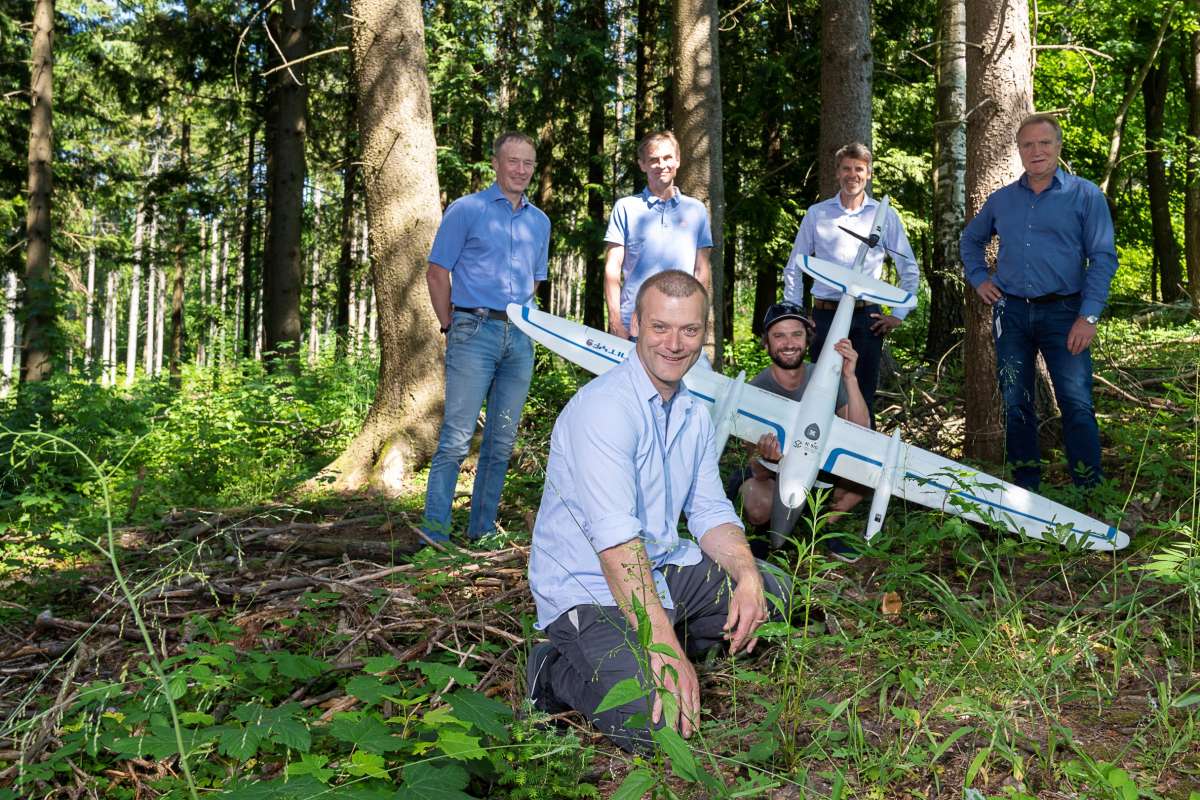Division of Forest and Forest Resources
SFI SmartForest: Bringing Industry 4.0 to the Norwegian forest sector

End: sep 2028
Start: oct 2020
SmartForest will position the Norwegian forest sector at the forefront of digitalization resulting in large efficiency gains in the forest sector, increased production, reduced environmental impacts, and significant climate benefits. SmartForest will result in a series of innovations and be the catalyst for an internationally competitive forest-tech sector in Norway. The fundamental components for achieving this are in place; a unified and committed forest sector, a leading R&D environment, and a series of progressive data and technology companies.
Project participants
Terje Gobakken Carolin Fischer Kjersti Holt Hanssen Stephan Hoffmann Csongor Horvath Paul McLean Stefano Puliti Johannes Rahlf Johannes Breidenbach Nils Egil Søvde Heikki Korpunen Katrin Zimmer Maciej Wielgosz Mostafa Hoseini Fride Høistad Schei Helle Ross Gobakken Steffan Lloyd Nicolas Cattaneo Stephanie Eisner Lennart Noordermeer Alexander Scharf Jeroen Van Houtte Ole Martin Bollandsås Maria Åsnes Moan Erik Næsset Hans Ole Ørka Oliver Tomic Yohann Jacob Sandvik Marie-Claude Jutras-Perreault Bjørn-Eirik Roald Julius Wold Håkon Næss Sandum Svetlana Saarela Kim Andre Anstensen Nielsen Arnoldo Frigessi Manuela Zucknick
Consortium
Centre host:
Norwegian Institute of Bioeconomy Research (NIBIO)
Norwegian research partners:
Norwegian University of Life Sciences (NMBU)
University of Oslo (UiO).
International research partners:
Mistra Digital Forest (Sweden)
FPInnovations (Canada)
RIF Institute for Research and Transfer (Germany).
Norwegian industry partners:
| Status | Active |
| Start - end date | 01.10.2020 - 30.09.2028 |
| Project manager | Rasmus Astrup |
| Division | Division of Forest and Forest Resources |
| Total budget | 234 Mio. NOK |
| Funding source | The Research Council of Norway |
The SmartForest Intended Impacts
SmartForest focuses on improving the forest sector in Norway. The centre aims to generate a better understanding of the forest value chain and implement digitalization to work smarter, more efficiently, and with more precision in forestry.
The efforts of SmartForest will result in a long-term, world-leading, industry-focused R&D environment focusing on enabling technologies for the digital transformation of the forest sector. This center will help improve the forest industry’s competitiveness and sustainability, ensuring the sector can thrive in the face of global challenges.
► Digital technologies
Ensure that the Norwegian forest sector will be managed using leading edge digital technologies
► Create innovations
Apply the emerging enabling technologies in the forest sector to create a series of innovations that can be operationalized and commercialized by the SmartForest partners
► Improve value production
Improve information, increased production efficiency, improved environmental efficiency, and overall increased value production from the forest-based value chain
► Improve recruitment
Improve the recruitment of professionals and young researchers in forestry
► Contribute to the green shift
Contribute towards therequired green shift in the Norwegian industry by:
-
facilitating increased value creation and international competitiveness of the Norwegian forest sector, and
-
create the foundation for a Forest-tech sector in Norway.
Workpackage Structure
SmartForest is the next leap in efficiency and environmental performance of the forest sector and will be enabled by digitalization and knowledge-based management.
The primary objective of SmartForest is to improve the efficiency of the Norwegian forest sector by enabling a digital revolution transforming forest information, silviculture, forest operations, wood supply and the overall digital information flow in the sector. The digital transformation will be enabled by a series of innovations that will form the foundation for the development for of a strong Forest-tech sector in Norway.
SmartForest is divided in six work packages, and within each we have defined tasks which will be annually updated.

► WP1: Forest Information
Focus in WP1 is the development of improved forest information. Combining data from emerging technologies can lead to significant improvement in forest information and create continuously updated and improved forest information for a much broader spectrum of variables than in today’s forest inventories.
► WP2: Precision silviculture
WP2 focuses on cost-efficient precision silvicultural practices that can increase the growth rates of Norway’s forest. Through application of the emerging technologies precision silviculture will provide operationally feasible and costefficient production gains.
► WP3: Digitally-enabled forest operations
Main focus in WP3 is the improvement of forest operation efficiency and avoidance of environmental damage through application of emerging technologies.
► WP4: Precision wood supply
WP4 focuses on the development of precision wood supply approaches that reduce costs of logistics, reduce seasonal fluctuations in wood supply, and increase the value creation of the harvested wood. Through the application of emerging technologies precision wood supply can be optimized, in a way that supply, and demand are matched both with respect to time and quality.
► WP5:Traceability and certification
Using forest machine data, traceability technologies, and sensors along the value chain will allow for full traceability throughout the value chain and enable semi-automatic reporting for certification as well as virtual audits.
► WP6: The digital value chain
Large efficiency gains can be achieved by enabling the digital value chain. WP6 will enable a fully digital flow of information between the key private and public actors in the forest sector by development of a series of application and APIs that connect the different actors in the value-chain.



